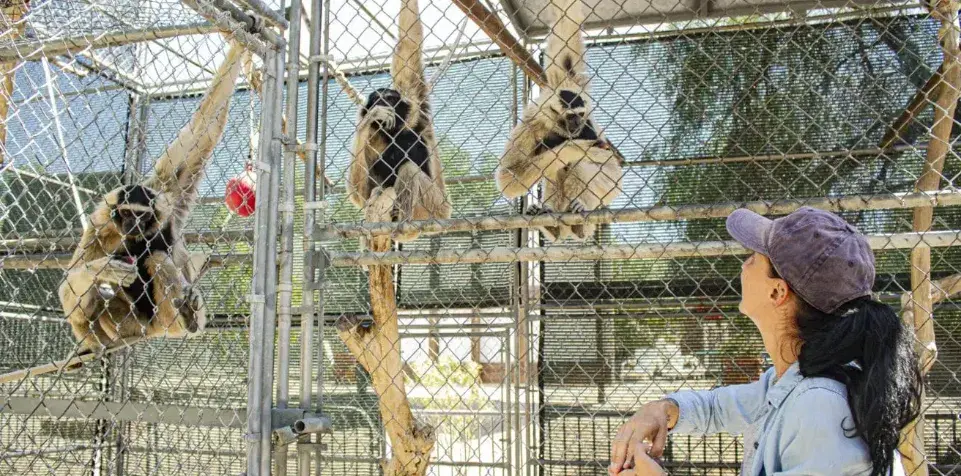At the Gibbon Conservation Center in Santa Clarita, CA, visitors are offered a unique window into the lives of one of the most intriguing yet lesser-known primates, the gibbon. Esteemed for their mesmerizing vocal performances and impressive brachiation abilities, gibbons play a crucial role in the ecological dynamics of Southeast Asia’s rainforests. The center not only provides a sanctuary for these endangered species but also serves as an educational platform, highlighting the pressing challenges gibbons face in the wild. By exploring these aspects, one gains insight into the complex interdependencies within these ecosystems and the urgent need for concerted conservation efforts. What remains to be seen is how this understanding translates into action in the broader context of global wildlife conservation.
Exploring the Gibbon Species
Surveying the diverse array of gibbon species, we find these small apes are pivotal inhabitants of tropical and subtropical rainforests across Southeast Asia. Gibbons are renowned for their distinctive mode of locomotion, brachiation, which allows them to swing gracefully from tree to tree. This ability not only showcases their agility but also reflects the critical role they play in the ecosystem, dispersing seeds and thus aiding in forest regeneration.
Gibbons are also celebrated for their vocalizations, which include a variety of hoots, screams, and melodious songs that can echo through the dense forests. These vocal displays are essential for maintaining territory and strengthening bonds within family groups, highlighting the social complexity of these creatures. Each species possesses its own unique song, contributing to the rich tapestry of sounds that define their habitats.
Understanding the nuances of gibbon behavior and ecology connects us more deeply to these enchanting primates. By recognizing their significance and the threats they face, we are reminded of our shared responsibility to preserve the natural world.
Engaging with the gibbon community, whether as visitors, conservationists, or simply as admirers from afar, fosters a sense of belonging to a broader effort to sustain the biodiversity that enriches our planet.
Conservation Efforts Unveiled
Recognizing the importance of these magnificent creatures, various conservation initiatives have been established to protect gibbon populations and their natural habitats. The Gibbon Conservation Center in Santa Clarita plays a pivotal role in these efforts by providing a sanctuary for these endangered primates and spearheading numerous research projects aimed at understanding their complex behaviors and ecological needs.
The Center’s approach to conservation is multifaceted, encompassing not only the rescue and rehabilitation of gibbons but also public education and global collaboration. Through workshops, guided tours, and educational materials, they strive to enlighten visitors about the critical challenges gibbons face, such as deforestation, poaching, and the illegal pet trade. This knowledge empowers individuals to take actionable steps in supporting conservation efforts.
Additionally, the Center collaborates with international wildlife organizations to promote policies that protect gibbons and their habitats. By sharing data and best practices, they help shape effective conservation strategies that are implemented worldwide.
Each effort underscores a commitment to ensuring that gibbons, with their distinct songs and remarkable agility, continue to thrive in the wild. This not only preserves biodiversity but also maintains the ecological balance within their forest environments, highlighting the interconnectedness of all life forms.
Read more:
Craft Brews and Good Vibes: A Visit to Pocock Brewing Company in Santa Clarita, CA
Outdoor Fun for All Ages: Exploring Central Park in Santa Clarita, CA


